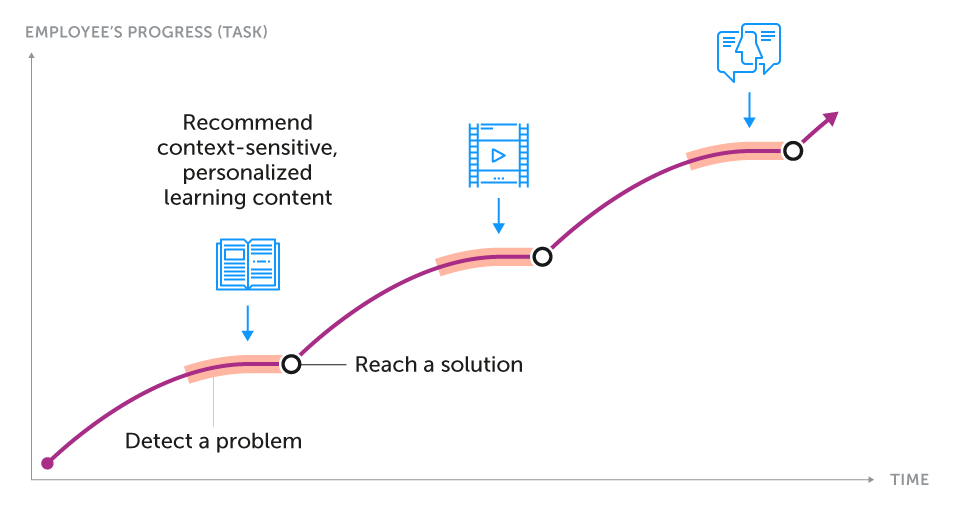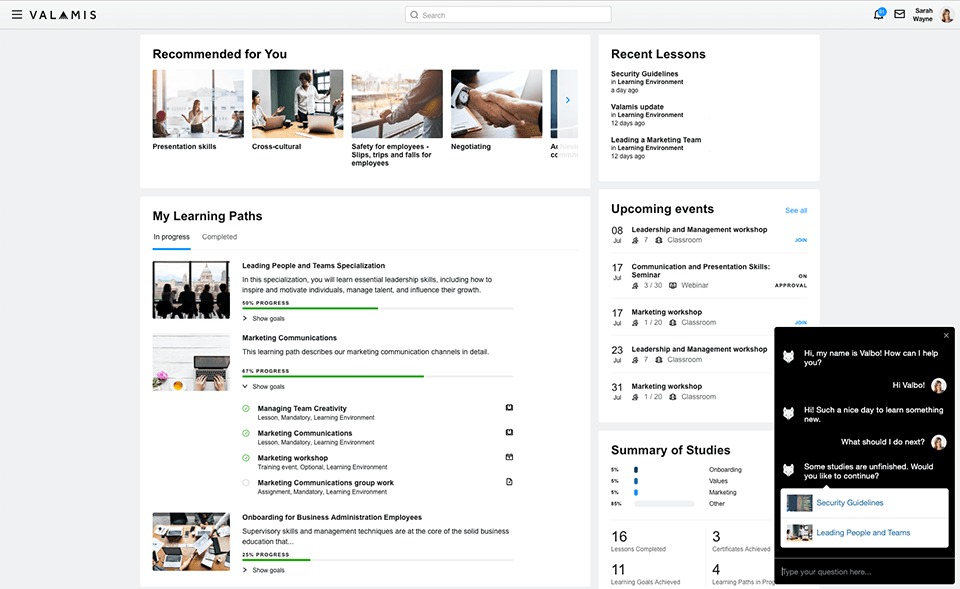Implementing corporate learning into everyday habits
How can we integrate corporate learning into an employee’s daily work and ensure that they’re engaged and participating?

Corporate learning is nothing new for most organizations, and many global players have already realized its advantages and have invested in improving their learning programs. Despite those growing efforts, many organizations are having a hard time convincing employees to utilize corporate learning.
Just like the need for corporate learning has evolved, so too have the software solutions to address those needs. The core idea of corporate learning software solutions is to organize learning content and make it more accessible for learners.
With modern Learning Management Systems (LMS’s) and Learning Experience Platforms (LXPs), there are sophisticated possibilities to have content libraries alongside a cognitive search tool that can deliver the most relevant and personalized content to the learner. Still, learner engagement does not improve as much as organizations are hoping for.
So how can organizations engage employees to learn? Five-day seminars twice a year are still a reality in some companies. People don’t want to learn things they won’t need and can’t apply to their own roles. Thinking about presentation slides and weeklong seminars makes most employees yawn internally.
How can engagement be increased?
- The first step in engaging employees to learn is to make accessible learning content that fits the learners’ individual needs. Learners also need space and permission to learn, as well as limits that remove uncertainty and create a safe atmosphere.
- The second step is to segment the learners and recommend them relevant content in the right context. If the employees study during the work day — the learning has to fit their schedules, and the content needs to be accessible with mobile devices, for example.
- The third step is to deliver the right content to individual learners. The delivery can be done by recommending the right content with the help of a recommendation engine and push notifications, and in an ideal case, the organization’s learning culture and tools in use will make learners want to come back for more.
The top management of many organizations has a significant role in communicating the importance of learning and encouraging the whole community to become a learning-supporting culture, especially at the beginning of the change process.
The internet has changed our consuming behaviors. We have grown used to getting personalized recommendations, and everything is just a few clicks away. It is clear that this behavior also transfers to the workplace. In order to engage people to learn, the means to deliver learning need to be modernized to match and surpass society’s everyday consumption of personalized content.

Organizations must realize that in the workplace, employees are their internal customers; employees buy into the company mission and become advocates for the brand to attract more talent, and they are more engaged to gain more skills that will, in turn, make the company better. The feeling of the content being personalized is the key to learner engagement.
“Too much focus is on delivery and too little focus is on what really matters: the learner and what works best for them. Personalizing elements of training or learning content alone is not going to build the relationships and engagement that will keep people coming back.
There is an important shift in mindset towards thinking of learning as an ongoing experience — not one-off events or a single transaction — but a blend of opportunities and engagements across a tailored trajectory that engages and develops people over time.”, states David Wilson, CEO of the Fosway Group.
What can personalization look like?
This requires companies to truly understand how, where, and when people are learning. Some individuals pull out their smartphones and search the internet for an answer. Some people are looking to become more informed on a general topic, and sometimes they will have a specific question in mind. In that case, a 20-page article on the subject is not ideal for the context, but rather a small, quick chunk of information that targets the exact question is more suitable for the learner.
According to Fosway Group’s 2019 Digital Learning Realities Research, learner engagement is one of the most desirable features needed to improve an organization’s approach to digital learning. Personalization is a key factor in this, with nearly 70 percent of the 800+ L&D professionals rating it as an important feature.
The individual, their need for an individual learning experience, and their case-by-case provision of content pieces appear to be an impossible task at first, but AI is a great tool to help with this, and a chatbot is one possible way to do it.
Chatbots as a part of a Learning Solution
People are getting used to AI assistants on various websites and even at home with devices like the Google Assistant or Amazon Echo. According to Verto Analytics, as of May 2017 more than 90 million U.S. adults (total monthly unique users) used AI-powered personal assistants on their smartphones, and they interacted with their assistants an average of 38 times per month.
According to another study by Radio Centre, in the UK people are interacting with voice assistants (on different devices) more than 167.75 times per month, which is about 5.5 interactions per day.
Given these numbers, it is only a matter of time before AI assistants are expected in organizations as well. One way to introduce AI to your organization is an AI-powered chatbot as a learning assistant. It’s easy to integrate with the learning environment and communication channels. An easily accessible learning assistant bot can communicate with the learners and provide answers to their questions. This way, learners will better orient themselves in a learning environment and receive personalized content recommendations.

Businesses can profit from chatbots by having improved onboarding, employee training, compliance training and much more. The advantages of a chatbot are not only for internal purposes — they can also be leveraged in training for channel networks, partner networks, resellers, and customers.
They can be integrated with the intranet or communication channels like Slack and inform employees about new learning materials, guidelines, and compliance regulation materials, as well as help them with existing questions.
Providers are constantly improving their AI by checking the success rates of recommendations. This way, chatting with a bot will become increasingly convenient, and soon it will feel as natural as talking to a human colleague. Considering the fast progress of chatbots, AI will become an important part of daily work in no time. Eventually, a chatbot will act as a personal tutor.
How to implement AI in your organization and how to utilize the benefits is a very big topic. It is too big to cover it in one blog post. This is why we created the new white paper “Your definitive guide to AI in Corporate Learning”. It will answer the most pressing questions concerning AI and what to consider.




